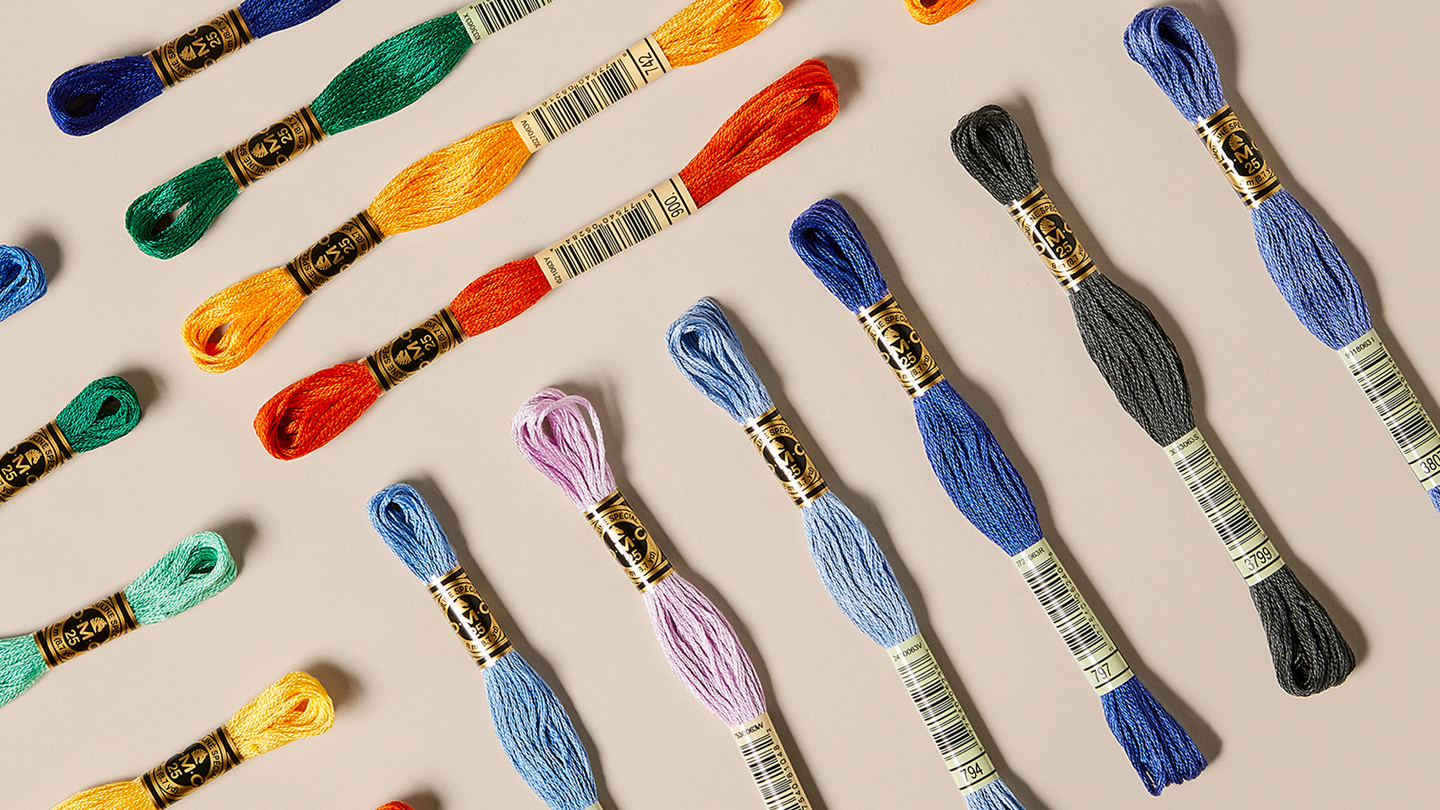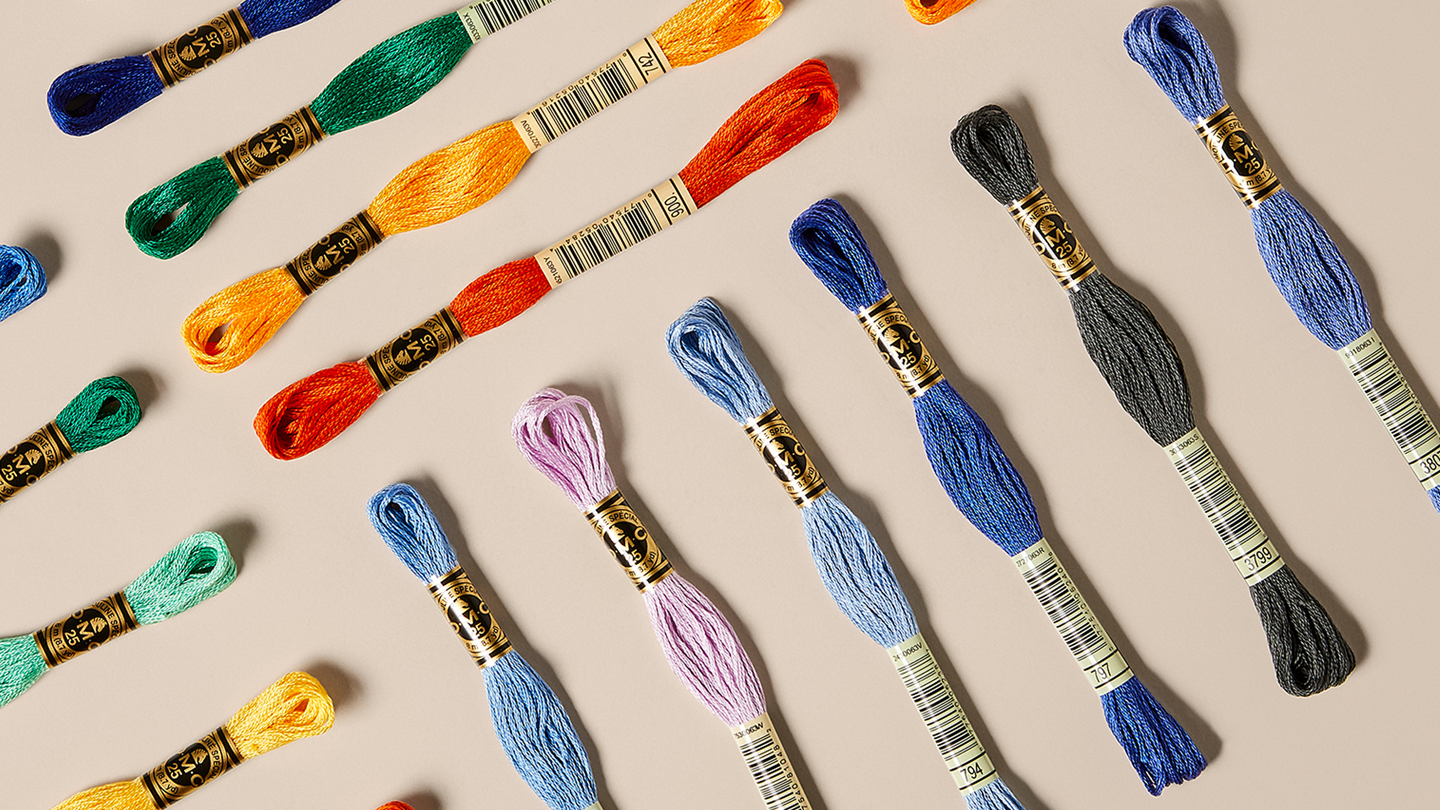What is Applique Layering?
Applique layering uses layers of fabric to form the background for your embroidery. It’s a great way to add texture, color, and dimension to your embroidery projects. As you can see demonstrated in the designs Georgie K Emery created for the DMC Designer Collection recently. In this article we discuss tips for creating applique layers in your own projects.
For beginners who want to explore this technique Georgie had these words of wisdom to share:
Have patience and with each attempt it will get easier. Applique can be very frustrating to begin with, I remember having very clear ideas in my mind about what I would want the fabric to do and the fabric just not cooperating with me when I first started experimenting. Persevere and with each attempt the fabric will begin to sit more smoothly and the process which used to take hours now takes a fraction of the time.
If you’re layering your fabric to fit into an embroidery hoop, a top tip is to make sure all your fabrics are cut to roughly the same size. This makes it easier to manage in the hoop if all the edges of fabric that sit outside the hoop are equal in size.

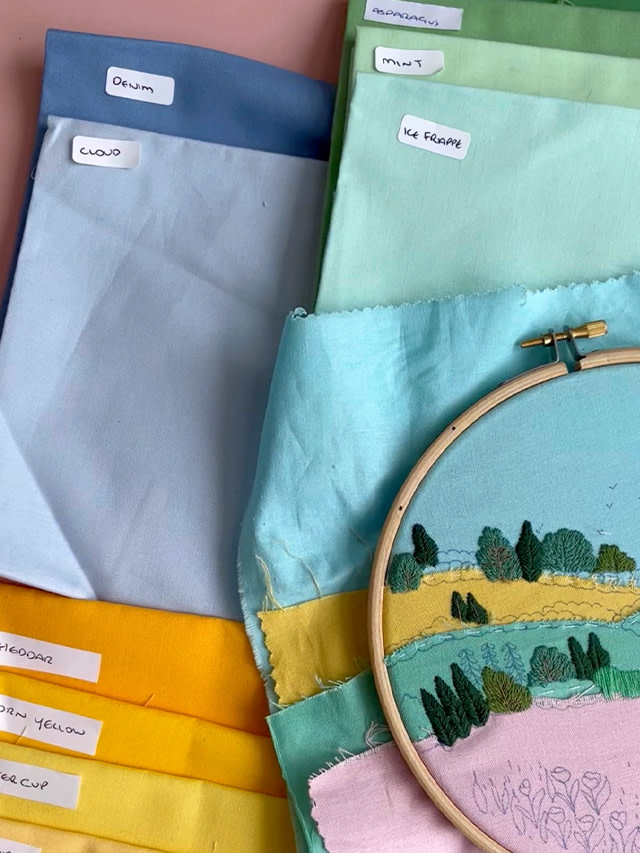
Top Tips for Applique Layering
Choose the Right Fabrics: When selecting fabrics for applique, choose ones that are easy to work with and complement your base fabric. Lightweight cotton or quilting fabrics work well for most projects. Try adding transparent fabrics that reveal stitching below can create a beautiful effect.
Cut Your Shapes Carefully: Use sharp scissors to cut your applique layers accurately and cleanly.
Use the Right Needle and Thread: When stitching your applique layers, use a needle and thread that match the weight and color of the applique fabric. A sharp needle and good-quality thread will make your stitching neater and more durable.
Secure Your Applique: To prevent your applique layers from shifting or bunching up while you sew it down, pin or loosely tack it in place. To add applique shapes you can also use fusible web to adhere them to the base fabric.
Experiment with Stitching Techniques: There’s a wide choice of stitches you can use to attach your appliques, such as zigzag stitch, satin stitch, and buttonhole stitch. Experiment with different stitches to achieve different effects and textures.
-
Add Details: Once you’ve attached your applique layers, you can add details using embroidery stitches to further enhance your design. In Georgie’s designs she cleverly uses her embroidery to cover the joins between her layers.
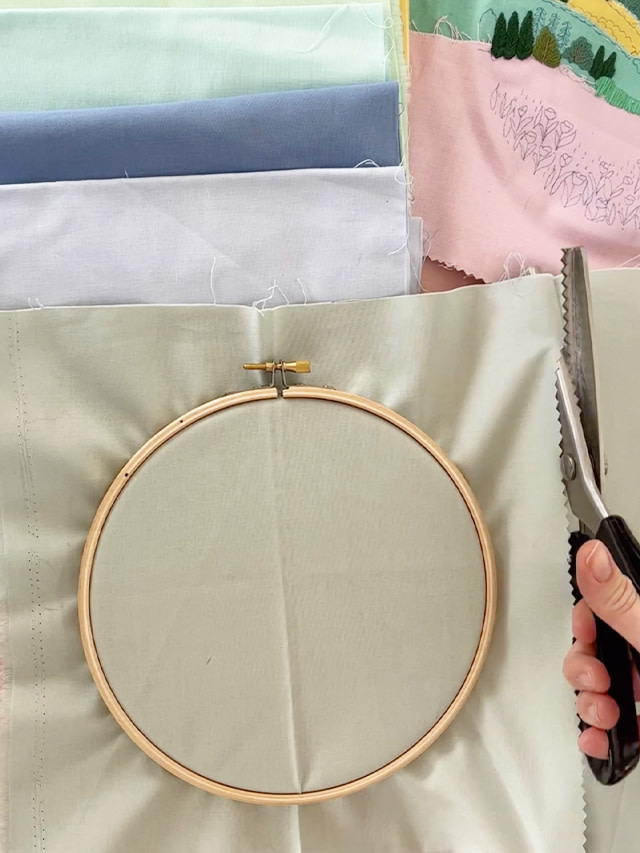
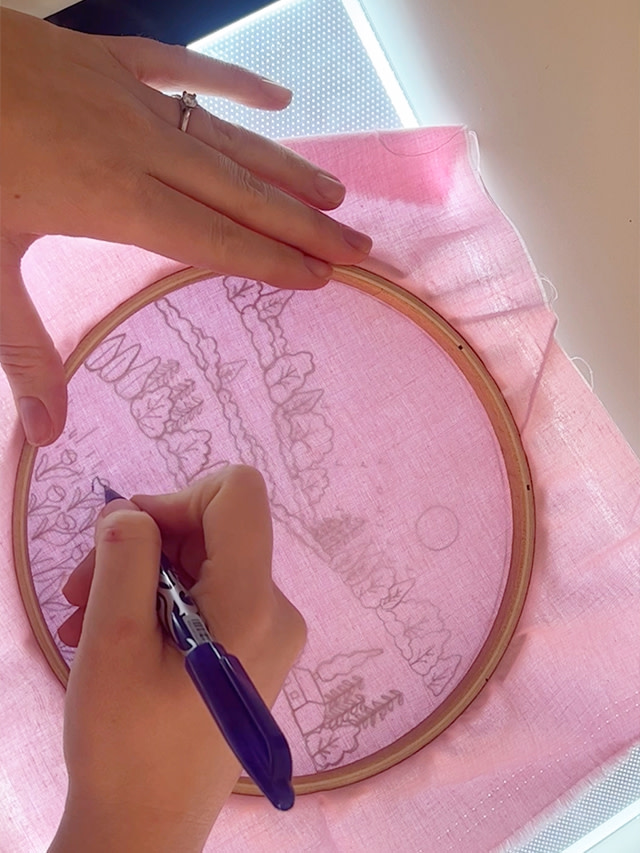
Adding applique to your embroidery projects is a fun and creative way to add interest and dimension to your work. By following these tips, you can create beautiful applique designs that will impress your friends and family.
If you’d like to try applique, a kit can be a great place to begin. Leading embroidery artist Georgie Emery has created two kits for the DMC Designer Collection that use applique layering and embroidery to create fabulous landscapes inspired by the Cotswolds region in the UK.
See Georgie Emery’s Winter Landscape Kit or Spring Landscape Kit which are both part of the Designer Collection, a kit collection expertly crafted by renowned designers from across the globe using iconic DMC threads. Classic and contemporary styles to inspire every taste. Achieve professional-looking needlecraft with these user-friendly kits.
How to do Applique Layering, Embroidery Techniques




